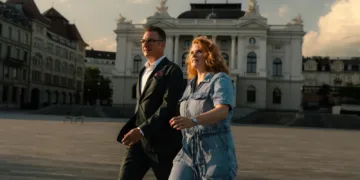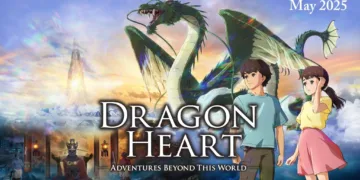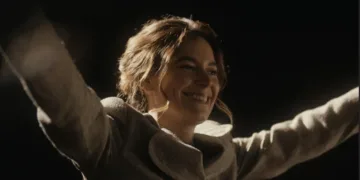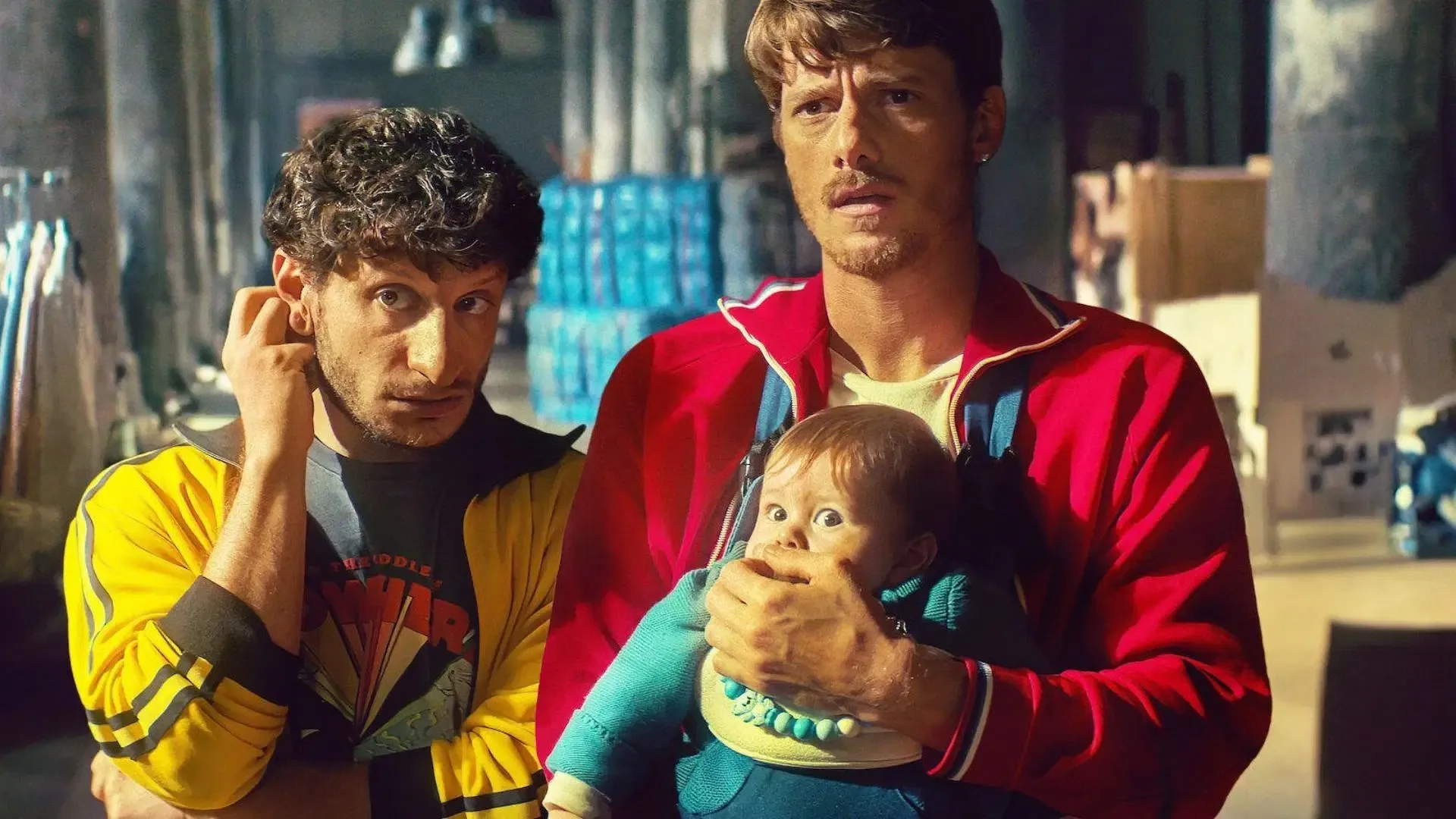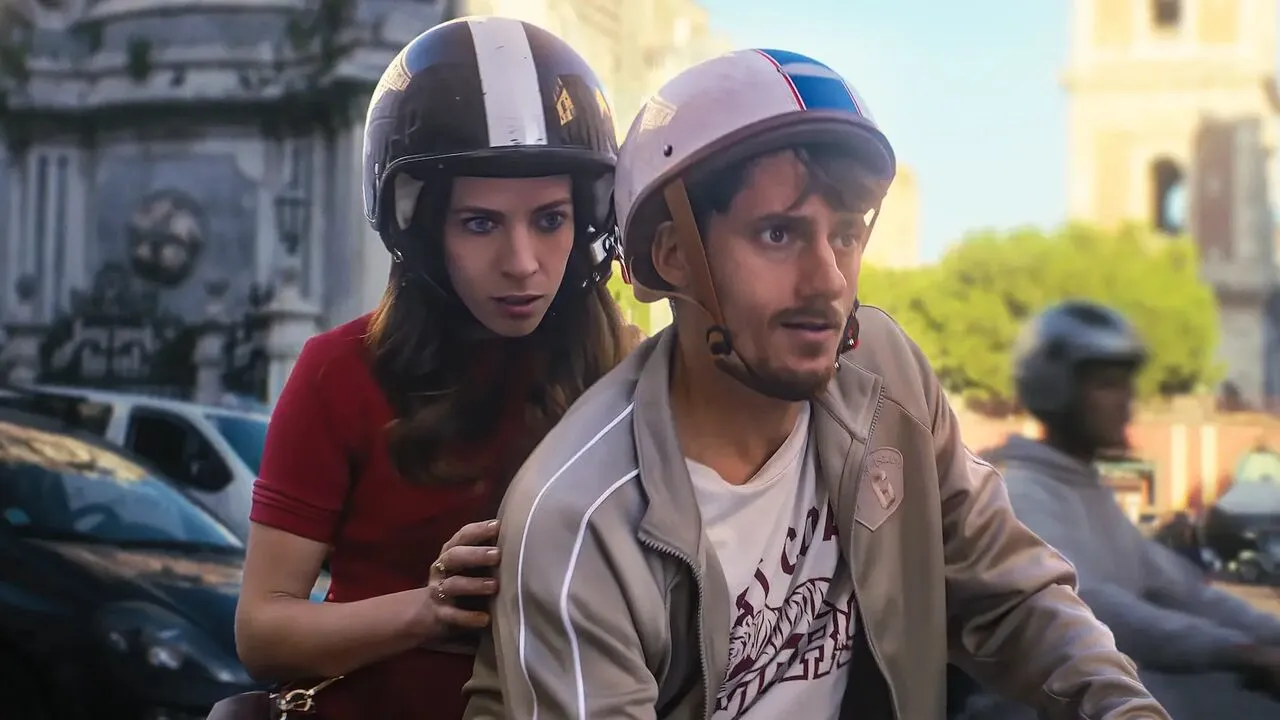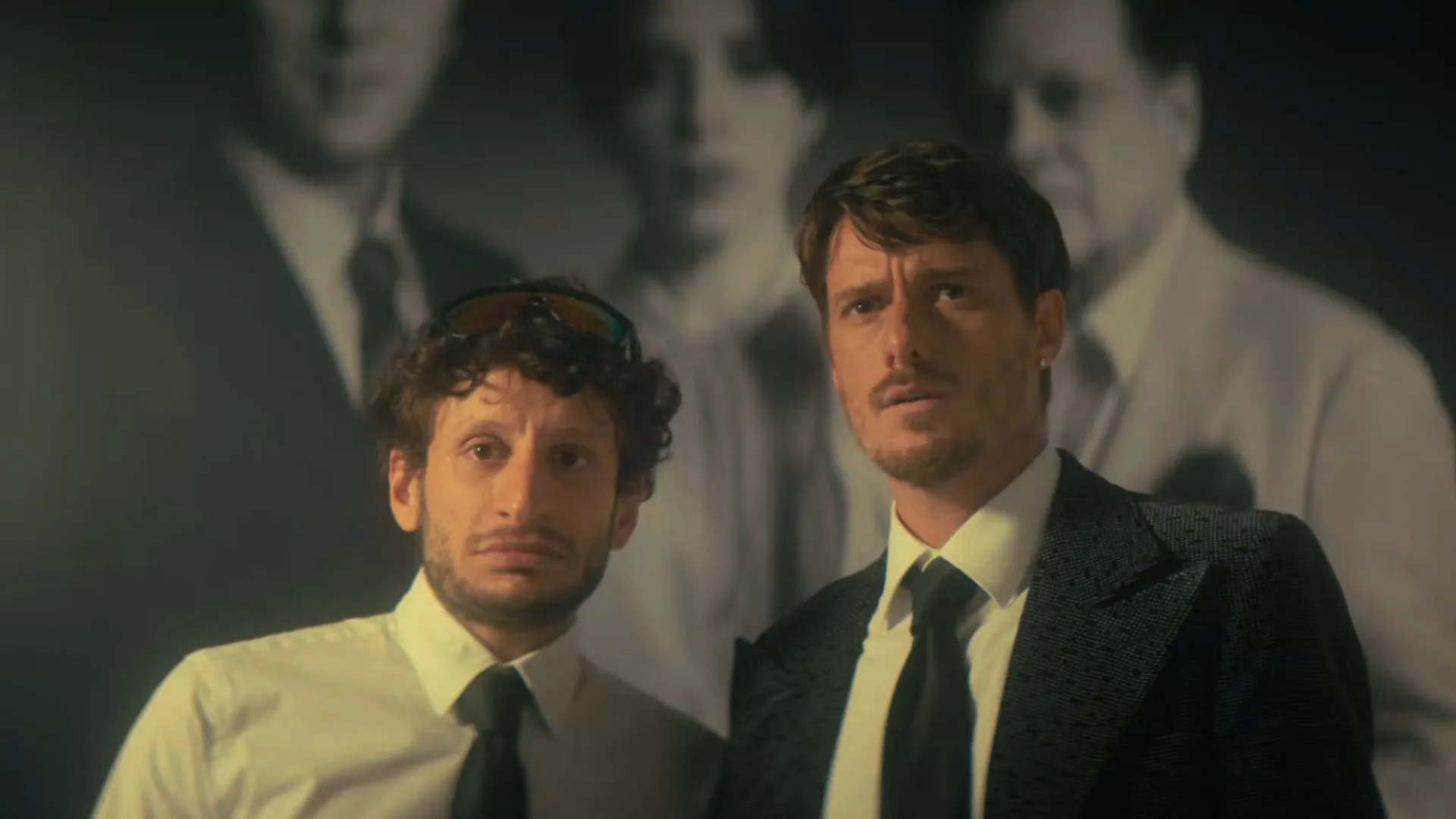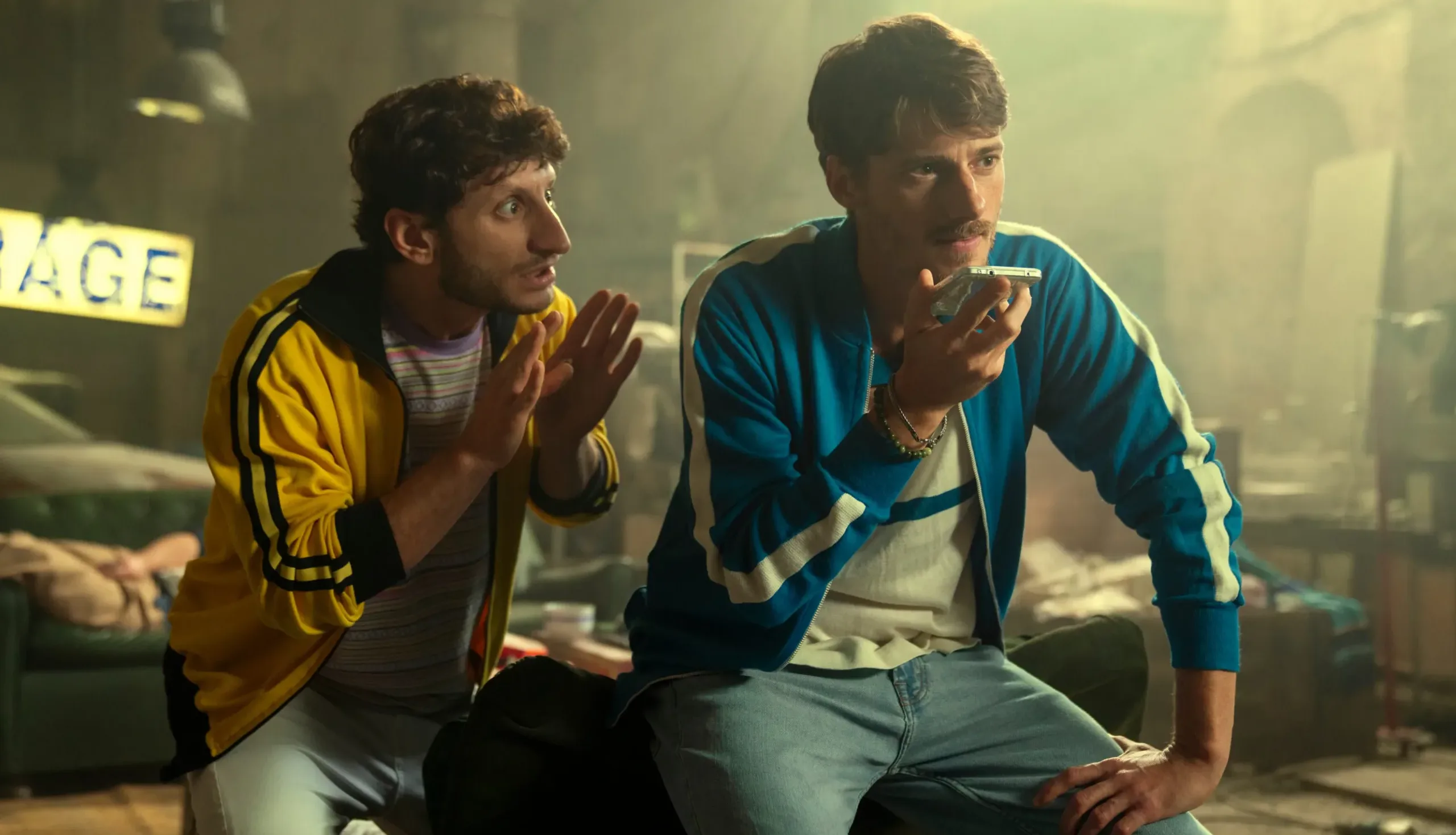In this film, we follow the escapade of two brothers from Naples who set in motion an elaborate scheme to rescue their ancestral home and secure the well-being of Vito’s child. The story unfolds against a setting where the storied beauty of Naples intersects with signs of urban decline.
The ancient architecture and winding streets serve as more than just a backdrop; they are interwoven into the narrative, providing a silent commentary on the changing face of the city under the pressure of modern real estate forces.
This environment, marked by the remnants of a once-proud legacy and the practical hardships of its inhabitants, fuels the tension between the family’s intimate struggles and the larger economic forces at play.
The film’s tone is crafted through moments of lighthearted humor juxtaposed with the stark realities of life in a transforming city. The interplay between moments of levity and the harsher truths of gentrification invites viewers to consider the impact of societal shifts on personal aspirations.
This setting creates a fertile ground for the characters’ actions, where every cobblestone and crumbling facade reflects a deeper dialogue about community, legacy, and survival.
Interwoven Storytelling and Structural Rhythms
The film follows a carefully plotted con where Vito adopts a new identity, transforming himself into a suave persona known as Carlo. This deceptive act is the pivot around which the narrative spins, as Vito is compelled to charm Marina and, in doing so, secure the funds necessary to stave off financial ruin.
The scam begins with the brothers facing a mounting crisis tied to an aging family property caught in the throes of urban renewal. Each twist in the narrative adds depth: the initial financial emergency sets the stage for the ingenious, albeit morally ambiguous, plan that is gradually unfolded through a series of misdirected identities and unexpected revelations.
The storyline is segmented into distinct parts that mirror a classical dramatic framework, yet it departs from strict conventions at times. The opening segment introduces the premise and establishes a realistic tension by highlighting the economic pressures and familial duty that drive the protagonists.
This portion of the narrative is rich with culturally specific details, from the particularities of Neapolitan urban life to the heritage of a bygone era that looms over the characters.
As the plot evolves, the film shifts into a phase marked by rising stakes and surprising twists. Here, Vito’s dual existence becomes increasingly challenging to sustain, revealing the emotional and psychological toll of living a lie. The story accelerates with moments of comic relief juxtaposed against the mounting pressure of impending failure, resulting in a rhythmic interplay between light and serious moments.
The final act focuses on the disintegration and eventual reconfiguration of these deceptions, as character conflicts reach a crescendo that questions the sustainability of their elaborate ruse.
This layered approach to narrative development offers a rich field for comparing the storytelling techniques seen in various international cinematic traditions, inviting ongoing reflection on the cultural imprint of its design.
Character Study Through a Cross-Cultural Lens
Vito faces a challenge in balancing his authentic self with the carefully constructed persona of Carlo. His transformation is marked by moments where the weight of his deceit becomes apparent. In one scene, his hesitation during a heartfelt conversation hints at the internal strain caused by living under a false identity.
This portrayal invites comparison with characters from various international traditions who must reconcile personal integrity with societal expectations. The tension in his performance reflects the cost of sacrificing truth for survival, making his journey a focal point of emotional conflict.
Marina’s character begins as a determined, affluent figure, shielded by a rigorous exterior. Throughout the film, she experiences a shift that exposes vulnerabilities rarely seen in similar roles from global cinema. Her gradual softening is captured through subtle changes in body language and expression, hinting at a conflict between her ambitions and a growing attraction to genuine sentiment.
This evolution resonates with narratives in other cultural works that examine the transformation of guarded individuals when confronted with unanticipated emotional warmth. Her internal struggles prompt viewers to consider how personal history and cultural expectations shape one’s response to love and responsibility.
Antonello offers a lighthearted counterpoint to the emotional complexities faced by Vito and Marina. His role, infused with humor, serves as a necessary balance to the film’s more intense moments, bringing relief without diminishing the stakes of the narrative. Federico provides a foil that underscores the moral ambiguities present in the plot, while baby Napoleon contributes subtle levity and a sense of hope.
Each supporting character, drawn with careful attention to their cultural roots, enriches the narrative and reflects the interplay between individual choices and collective heritage, inviting viewers to consider the diverse influences that shape identity and interpersonal connections.
Thematic Exploration & Social Commentary
The film portrays family ties as a vital resource in a challenging economic setting. The narrative centers on a single parent battling the pressures of modern life while relying on the steadfast support of a sibling.
Intimate moments between Vito and his brother capture the spirit of a community where kinship and shared history help sustain personal resolve. The story highlights how local customs and traditions infuse everyday struggles with a sense of purpose and belonging, echoing cultural practices familiar in Mediterranean society.
The depiction of financial strain emerges as a powerful counterpoint to the personal dynamics. The once-proud family home, now showing signs of neglect, stands in stark opposition to aggressive urban development plans. This visual and narrative contrast questions the impact of rapid urban renewal on longstanding cultural landmarks.
Characters find themselves caught in a tug-of-war between the desire to preserve their heritage and the demands of a modern economic system. Scenes that capture the quiet desperation of maintaining a fading legacy are interspersed with bursts of resourcefulness, inviting the viewer to reflect on the price of change.
The film also scrutinizes certain romantic devices that spark debate over their ethical standing. The use of deceptive tactics in the pursuit of affection brings forward difficult issues related to personal boundaries and social roles. By incorporating elements that many view as questionable, the movie challenges the audience to reconsider familiar storytelling formulas.
In doing so, it opens a window into the tensions that arise when traditional narrative methods meet evolving societal standards. This interplay between the weight of historical values and the pull of new economic realities offers a layered experience that leaves room for varied interpretations and ongoing reflection.
Visuals, Direction, and Production Design
The film presents Naples as a living canvas, where historic stone facades and narrow lanes evoke the legacy of a bygone era while modern wear and tear speak to current challenges.
One striking scene features a sunset over the bay, casting warm light on weathered buildings and quiet streets—a moment that speaks to the city’s layered identity. The location itself becomes an integral element, its beauty and decay offering subtle commentary that complements the narrative.
Director Umberto Carteni crafts scenes with deliberate care, arranging shots that mirror the film’s emotional cadence. Music and editing work in concert with carefully chosen costumes and set designs, creating an environment that feels both genuine and evocative.
In one notable sequence, a character’s pensive glance against a backdrop of crumbling architecture underscores the tension between cherished heritage and the relentless pressure of modern change.
The production design draws on local artistic traditions and the everyday reality of Naples, using natural light and carefully framed compositions to invite viewers into the film’s intimate world.
The interplay between the city’s storied past and its current struggles enriches the storytelling, highlighting how physical spaces can influence character and mood.
This visual strategy offers a reflection on the impact of regional history on personal experiences, opening up a space for contemplation about how settings shape the stories we tell.
Humor, Tone, and Emotional Impact
The film’s comedic moments stand in sharp relief with the weight of its more somber dilemmas. Instances of slapstick, witty exchanges, and moments of uncomfortable humor offer relief amid an atmosphere of financial strain and ethical uncertainty.
In several scenes, Vito’s clumsy attempts to win over Marina through awkward antics serve as a counterbalance to the tension of impending loss and personal sacrifice. This approach creates a dynamic rhythm where moments of levity interrupt and highlight the pressing realities faced by the characters.
The relationship between Vito, in his crafted guise, and Marina serves as a focal point for this interplay. Their banter and gradual shift from playful repartee to heartfelt interaction provide a window into the personal costs of maintaining a facade. A quiet moment over a shared meal captures a rare instance of vulnerability, suggesting that beneath the charade lies an earnest human connection.
Secondary characters contribute to the overall mood, with Antonello offering bursts of humor that both distract and draw attention to the moral quandaries of their situation, while baby Napoleon adds a touch of innocence that lightens the narrative’s heavier themes.
Elements drawn from regional culture infuse the humor with local color, encouraging viewers from various backgrounds to see familiar social quirks in a new light. The film’s oscillation between absurdity and sincere emotion invites reflection on how humor can mask, yet also reveal, the deeper challenges of life in a changing world.
Final Reflections and Cultural Resonance
The film weaves humor, romance, and a keen examination of societal issues into a narrative that is as thought-provoking as it is entertaining. Its narrative, centered on a deceptive plot designed to rescue a cherished family home, provokes a response that is as complex as the characters themselves.
The scam serves as a device to explore deep personal and collective challenges, highlighting the struggle to balance self-interest with familial duty.
In scenes where the fabricated persona of Carlo exposes cracks in Vito’s inner life, we witness the cost of living a lie amid severe economic pressure. This interplay between lighthearted moments and weighty dilemmas offers a textured look at how personal integrity grapples with survival tactics.
Within the rom-com framework, the film departs from expected tropes by infusing its storyline with elements drawn from a rich cultural setting. It draws comparisons to works from various regions where the tension between historical legacy and modern aspirations is palpable.
The careful use of location, notably the portrayal of Naples with its timeless charm and evident decay, enhances character arcs and reinforces themes of loss and resilience.
The film’s visuals, coupled with its meticulously arranged score and editing, make its social commentary more immediate and resonant. While its approach to familiar motifs like deception and romance is at times flawed, the work stands as a striking example of how cultural heritage and current realities can influence storytelling. One is left to wonder how such cinematic experiments might continue to shape our understanding of identity and societal change.
The Review
The Love Scam
A film that mixes personal trials with cultural insight, offering a rom-com with engaging visuals and layered character dynamics. Its portrayal of Naples and the interplay of humor with deeper societal issues spark thoughtful reflection, even as the narrative sometimes leans too heavily on familiar tropes. Overall, it provides a memorable experience that invites discussion on identity and heritage.
PROS
- Strong visual portrayal of Naples
- Nuanced character dynamics
CONS
- Overreliance on familiar rom-com tropes
- Some pacing issues in narrative structure



















